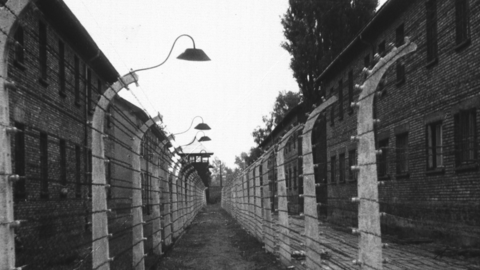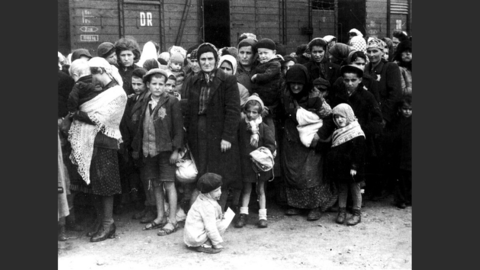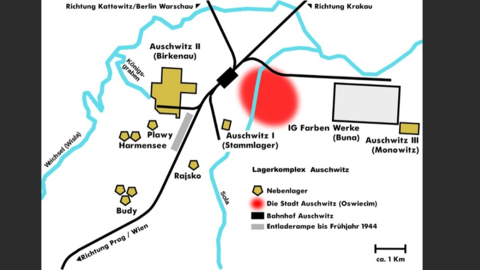"Auschwitz" stands for the industrialized murder of millions of European Jews in particular, but also of other groups of victims, such as the Sinti and the Roma, carried out under National Socialism.

Crime against humanity
The Auschwitz Concentration and Death Camp

This execution site was created in April 1940, when SS Reichsführer Himmler ordered the erection of a concentration camp near the small town of Auschwitz in southern Poland. There was a Polish barracks with 22 buildings from the Austro-Hungarian monarchy here, which was suitable for the expansion of the German Reich system of concentration camps into the territory conquered from Poland. A crematorium had already been built at the camp known as Auschwitz I (the so-called main camp) to get rid of the numerous corpses of murdered prisoners. In 1941, the SS began to expand the Auschwitz Concentration Camp into an extensive complex. Monowitz Labor Camp, which was later also known as Auschwitz III, was set up about six miles east of the main camp by the SS in collaboration with I.G. Farben AG, a large German conglomerate. Thousands of prisoners performed forced labor for the German chemicals industry there under miserable living conditions: "extermination through work". In September 1941, Himmler ordered the expansion of the complex by Auschwitz Camp II (Birkenau), which lay three kilometers to the west of Auschwitz. Initially intended to be a labor camp for about 100,000 Soviet prisoners of war, Auschwitz II was used for the systematic extermination of Jews as of 1942.

As of the end of August 1941, the SS had conducted initial "gassing experiments" using the pesticide Zyklon B at the Auschwitz I main camp. Subsequently, the gassing of humans with Zyklon B was deemed an effective method of mass murder, which was perfected by the SS with the construction of additional gas chambers and crematoria. Between 1942 and until the discontinuation of the gassing in November 1944, Auschwitz Death Camp II at Birkenau was the site of the unique and industrially organized mass murder of more than 900,000 persons, primarily of Jewish descent, who were killed in gas chambers immediately after their arrival at the camp.

Due to the approach of the Red Army, the SS began to eradicate the evidence of their monstrous crime. On January 17, 1945, 58,000 people were forced to go west on "death marches" during the "evacuation" of the camp. Ten days later, on January 27, 1945, the Soviet Army liberated Auschwitz with its remaining 7,000 prisoners. Realistic estimates concerning the numbers of victims exceed 1.1 million human beings, who had been exterminated at the Auschwitz camp complex by that time.
Photographic Evidence
The Auschwitz Album is a unique document of the process leading to the mass murder at Auschwitz-Birkenau. It is kept at Yad Vashem - The World Holocaust Remembrance Center.